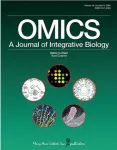(Press-News.org) Embargoed for release until 5:00 p.m. ET on Monday 16 September 2024
@Annalsofim
Below please find summaries of new articles that will be published in the next issue of Annals of Internal Medicine. The summaries are not intended to substitute for the full articles as a source of information. This information is under strict embargo and by taking it into possession, media representatives are committing to the terms of the embargo not only on their own behalf, but also on behalf of the organization they represent.
----------------------------
1. Analysis finds cardiac devices recalled for safety reasons infrequently subjected to premarket or postmarket testing
Cardiovascular device recalls affect thousands of patients annually
Abstract: https://www.acpjournals.org/doi/10.7326/ANNALS-24-00724
Editorial: https://www.acpjournals.org/doi/10.7326/ANNALS-24-01840-C
URL goes live when the embargo lifts
A cross-sectional study of cardiovascular devices subject to Class I recalls from 2013 through 2022, found that most recalled devices did not undergo clinical testing before authorization and were not required to undergo postmarket surveillance studies. Even when premarket clinical testing was conducted, there was often a lack of evidence to support their original authorization. These findings have important public health implications because recalls affect thousands of patients each year. The study is published in Annals of Internal Medicine.
Researchers from Harvard Medical School, Yale School of Medicine, and the University of California, San Francisco performed a cross-sectional analysis of all Class I recalls involving cardiovascular devices from 1 January 2013 through 31 December 2022 using data from the FDA’s annual log to characterize the device recalls and the clinical evidence supporting their initial authorization. The researchers found that there were 137 Class I recall events affecting 157 unique cardiovascular devices during the study timeframe. About 71% of the recalls were for moderate-risk 510(k) devices and about 28% were for high-risk premarket approval (PMA) devices. Only about 19% of the recalled devices underwent premarket clinical testing and evidence was usually generated from a single nonrandomized, unblinded clinical trial using surrogate measures with no active control. According to the study authors, these findings illustrate the limited clinical evidence supporting the use of cardiovascular devices later found to have serious safety concerns.
Media contacts: For an embargoed PDF, please contact Angela Collom at acollom@acponline.org. To speak with corresponding author Kushal T. Kadakia, MSc, please e-mail kushalkadakia@hms.harvard.edu.
----------------------------
2. Children who experience an initial firearm injury at high risk for experiencing another
Abstract: https://www.acpjournals.org/doi/10.7326/M24-0430
URL goes live when the embargo lifts
A 10-year retrospective cohort analysis found that children who experienced an index (initial) firearm injury during the study period were at high risk for experiencing a recurrent firearm injury. These findings are important because they underscore the need to understand the patient characteristics and contributing factors that increase the risk for firearm injury and reinjury in the community. The findings are published in Annals of Internal Medicine.
Firearm injuries are the leading cause of death among children aged 0 to 17 years in the United States. Researchers led by Washington University School of Medicine sought to determine the factors associated with recurrent firearm injury among children who presented with a first nonfatal firearm injury (index injury) at one of four St. Louis adult or pediatric Level I trauma hospitals between 2010 and 2019. Data were collected from the St. Louis Region-Wide Hospital-Based Violence Intervention Program Data Repository (STL-HVIP-DR), a comprehensive repository developed by the study authors tracking patient care across multiple hospitals. The STL-HVIP-DR incorporated data on patient demographics, hospital and diagnostic information, health insurance status, and mortality. The Social Vulnerability Index was used to characterize the social vulnerability of the census tracts of patients’ residences. Data were linked to the National Death Index to identify recurrent firearm injuries that resulted in death in the prehospital setting (i.e., patients who would not be captured in the STL-HVIP-DR).
The researchers found that during the 10-year study period, 1,340 children had a firearm injury. Most of those patients were black, non-Hispanic males between the ages of 15 and 17 years. 179 (13%) of index firearm injuries occurred in children under the age of 10 years. The estimated risk for firearm reinjury was 6% at 1 year and 14% at 5 years after the first injury, with male children and those being seen at adult hospitals at the highest risk for reinjury. These findings highlight the high cumulative incidence of children experiencing recurrent firearm injury in St. Louis and identifies racial and social vulnerabilities that increase that risk. According to the study authors, this data can inform secondary prevention efforts, such as hospital-based violence intervention programs, which can be tailored to the needs of children at greatest risk.
Media contacts: For an embargoed PDF, please contact Angela Collom at acollom@acponline.org. To speak with corresponding author Kristen Mueller, MD, please e-mail Kristen.Mueller@wustl.edu.
----------------------------
3. Improved prognostic model incorporates HBV viral load data to accurately predict liver cancer risk
Abstract: https://www.acpjournals.org/doi/10.7326/M24-0384
Editorial: https://www.acpjournals.org/doi/10.7326/M24-0894
URL goes live when the embargo lifts
A new risk prediction model, the Revised REACH-B, demonstrated superior accuracy and reliability in predicting hepatocellular carcinoma, or liver cancer, risk compared to a previous model, offering improved risk stratification for patients. According to researchers, this tool could enable clinicians to better predict and assess liver cancer risk in non-cirrhotic patients with chronic hepatitis B (CHB) virus who do not meet current criteria for antiviral treatment. The study is published in Annals of Internal Medicine.
A multinational cohort study of more than 14,000 treatment-naive, non-cirrhotic adult patients with chronic hepatitis B (HBV) infection revealed a significant non-linear correlation between baseline hepatitis B (HBV) viral load and the risk for developing liver cancer. Notably, patients with a moderate viral load of approximately 6 log10 IU/mL had the highest HCC risk. Researchers from Asan Medical Center, University of Ulsan College of Medicine, Seoul, Republic of Korea developed and externally validated a new risk prediction model using key patient characteristics such as age, gender, platelet count, ALT levels, and HBeAg positivity. They found that the model demonstrated superior accuracy and reliability in predicting HCC risk compared to the previous REACH-B model. Notably, patients with a moderate viral load of approximately 6 log10 IU/mL were confirmed to have the highest HCC risk. In comparison to patients with a low viral load (≤3 log10 IU/mL), those with a moderate viral load faced an 8.4-fold increase in liver cancer risk within the validation cohort. According to the authors, this study highlights the importance of revisiting treatment guidelines, as those with moderate viral loads may benefit from proactive management to reduce liver cancer risk.
Media contacts: For an embargoed PDF, please contact Angela Collom at acollom@acponline.org. To speak with corresponding author Young-Suk Lim, MD, PhD, please email limys@amc.seoul.kr.
----------------------------
END
Analysis finds cardiac devices recalled for safety reasons infrequently subjected to premarket or postmarket testing
2024-09-16
ELSE PRESS RELEASES FROM THIS DATE:
Trailblazers in plasma turbulence computer simulations win 2024 James Clerk Maxwell Prize
2024-09-16
A pair of physicists with long ties to PPPL are being honored for their foundational work on turbulence in plasma. Understanding why instabilities occur and how to limit them is critical to perfecting fusion as a stable energy source for the electrical grid.
Greg Hammett, a PPPL theoretical and computational principal research physicist, and Bill Dorland, former associate laboratory director for computational sciences and current Lab adviser, have won the 2024 James Clerk Maxwell Prize for Plasma Physics. The American ...
Technology could boost renewable energy storage
2024-09-16
Renewable energy sources like wind and solar are critical to sustaining our planet, but they come with a big challenge: they don't always generate power when it's needed. To make the most of them, we need efficient and affordable ways to store the energy they produce, so we have power even when the wind isn't blowing or the sun isn't shining.
Columbia Engineering material scientists have been focused on developing new kinds of batteries to transform how we store renewable energy. In a new study published September 5 by Nature Communications, the team used K-Na/S batteries that combine inexpensive, readily-found elements -- ...
Introducing SandAI: A tool for scanning sand grains that opens windows into recent time and the deep past
2024-09-16
Stanford researchers have developed an artificial intelligence-based tool – dubbed SandAI – that can reveal the history of quartz sand grains going back hundreds of millions of years. With SandAI, researchers can tell with high accuracy if wind, rivers, waves, or glacial movements shaped and deposited motes of sand.
The tool gives researchers a unique window into the past for geological and archeological studies, especially for eras and environments where few other clues, such as fossils, are preserved ...
Critical crops’ alternative way to succeed in heat and drought
2024-09-16
Scientists have discovered that certain plants can survive stressful, dry conditions by controlling water loss through their leaves without relying on their usual mechanism - tiny pores known as ‘stomata’.
Nonstomatal control of transpiration in maize, sorghum, and proso millet – all C4 crops which are critical for global food security – gives these plants an advantage in maintaining a beneficial microclimate for photosynthesis within their leaves.
This allows the plants to absorb carbon dioxide ...
Students with multiple marginalized identities face barriers to sports participation
2024-09-16
MINNEAPOLIS/ST. PAUL (09/16/2024) — The U.S. Department of Health and Human Services Healthy People 2030 plan sets a national objective to increase youth sports participation from 50% to 63% over the next five years. For adolescents, staying active offers benefits to their overall health and their social and academic lives. However, the number of youths participating in physical activity and sports is on the decline. While participation gaps based on single social identities ...
Purdue deep-learning innovation secures semiconductors against counterfeit chips
2024-09-16
WEST LAFAYETTE, Ind. — Researchers in Purdue University’s College of Engineering have developed a patent-pending optical counterfeit detection method for chips used in semiconductor devices.
The Purdue method is called RAPTOR, or residual attention-based processing of tampered optical responses. It leverages deep learning to identify tampering. It improves upon traditional methods, which face challenges in scalability and discriminating between natural degradation and adversarial tampering.
Alexander Kildishev, professor in the Elmore ...
Will digital health meet precision medicine? A new systematic review says it is about time
2024-09-16
A new systematic review of pharmacogenomics clinical decision support systems used in clinical practice in the peer-reviewed OMICS: A Journal of Integrative Biology suggests that these e-health tools can help accelerate pharmacogenomics, precision/personalized medicine, and digital health emergence in everyday clinical practice worldwide. Click here to read the article now.
Anastasia Farmaki, MSc, from the Centre for Research and Technology Hellas, Thessaloniki, and coauthors in Greece, conducted a systematic review that examined and mapped the pharmacogenomics-clinical decision support ...
Improving eye tracking to assess brain disorders
2024-09-16
A University of Houston engineering team has developed wearable sensors to examine eye movement to assess brain disorders or damage to the brain. Many brain diseases and problems show up as eye symptoms, often before other symptoms appear.
You see, eyes are not merely a window into the soul, as poets would have it. These incredibly precious organs are also an extension of the brain and can provide early warning signs of brain-related disorders and information on what causes them. Examining the eyes can also help track the progression and symptoms of physical and mental shocks to the brain.
Researchers say ...
Hebrew University’s professor Haitham Amal is among a large $17 million grant consortium for pioneering autism research
2024-09-16
Hebrew University of Jerusalem is proud to announce that Professor Haitham Amal is among a large $17M grant consortium for pioneering autism research. This grant is part of an American funding initiative awarded by the California Institute for Regenerative Medicine (CIRM), aimed at advancing cutting-edge autism studies.
A world-renowned expert in nitric oxide and brain disorders, Professor Amal has made groundbreaking discoveries in autism research. His team was the first to identify a direct link between nitric oxide levels in the brain and autism spectrum disorder (ASD), a finding with profound implications for the ...
Scientists mix sky’s splendid hues to reset circadian clocks
2024-09-16
Those mesmerizing blue and orange hues in the sky at the start and end of a sunny day might have an essential role in setting humans’ internal clocks.
In new research from the University of Washington in Seattle, a novel LED light that emits alternating wavelengths of orange and blue outpaced two other light devices in advancing melatonin levels in a small group of study participants.
Published in the Journal of Biological Rhythms, the finding appears to establish a new benchmark in humans’ ability to influence their circadian rhythms, and reflects an effective new approach to counteract seasonal affective disorder (SAD).
A ...




